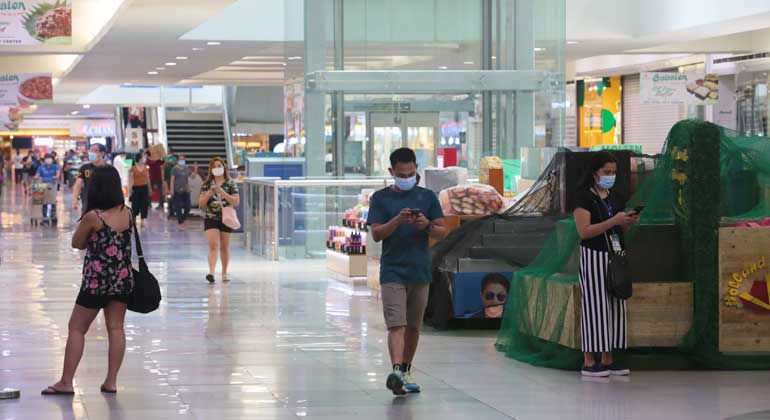
THE ASEAN+3 Macroeconomic Research Office (AMRO) expects to see a “Nike swoosh” or V-shaped recovery for the region after the coronavirus crisis, although the pace of recovery will vary depending on each economy’s pandemic response.
In an analytical note released on Monday, the think tank noted the negative growth rates of the regional economies amid the ongoing crisis have already exceeded those seen in the Asian financial crisis and global financial crisis.
“While AMRO staff are now projecting a ‘Nike swoosh’ -type V-shaped recovery in (year-over-year) growth, the trajectory will depend on whether further, sustained, waves of the pandemic can be staved off, as failure to do so may result in protracted U- or even W-shaped growth profiles,” it said in the note titled “Another ‘unprecedented’ crisis? This, too, shall pass.”
Based on the latest quarter-on-quarter figures, all regional economies are in technical recession, except for China and Indonesia. ASEAN+3 includes the members of the regional bloc plus China, Japan and South Korea.
Philippine gross domestic product (GDP) fell by a record 16.5% in the second quarter, when the lockdown brought economic activity to a near halt.
In its latest analysis, AMRO forecast the Philippine GDP to shrink by 7.5% in the third quarter and by 5.7% in the fourth quarter. This would bring its Philippine economic outlook to -7.6% for full-year 2020, lower than the -6.6% forecast it gave in August.
For 2021, AMRO sees a 0.1% uptick for the Philippine economy in the first quarter, 16.4% in the second quarter, 5.1% in the third quarter and 5% in the fourth quarter. This would mean a 6.65% GDP forecast for the entire 2021, which is higher than the 6.5% it gave in June and lower than the 7.4% estimated in April.
The projections were based on AMRO’s study of recovery paths of selected ASEAN+3 economies after the Asian financial crisis (AFC) and the Global financial crisis (GFC).
“The current pandemic — we will call it the ‘COVID crisis’ — is unprecedented in that the lockdowns brought global economic activity to virtual standstill never before seen, and is now expected to cause the worst recession since the Great Depression, far worse than the GFC,” it said.
While Southeast Asia was the epicenter of the Asian financial crisis, AMRO said the region remained resilient during the GFC.
“The recovery in growth from the AFC was largely U-shaped. Many economies were mired in negative year-over-year growth for 5-6 quarters; the Philippines and Singapore posted 3 quarters of contraction, while Korea recorded 4 quarters of decline. Indonesia, Malaysia, and Thailand each posted at least one quarter of double-digit contraction. Although China did not experience a recession, it grew at its weakest pace during this period,” AMRO said.
The GFC’s impact on the region’s economies was “relatively light,” with most seeing V-shaped growth recoveries after three to four quarters of contraction, it said. China, the Philippines and Indonesia posted positive growth throughout the GFC.
However, AMRO warned the “apparent rebound in growth following each crisis can be deceptive.”
“In part, the strong growth numbers that tend to follow a recession are attributable to the low base effect. What is usually less obvious is the damage wrought on an economy during a severe crisis. Some economies may take a long time to recover their previous growth potential, while others suffer permanent impairment to GDP levels,” it said.
Even if an effective COVID-19 vaccine is discovered, AMRO said the pandemic “will likely have permanently changed the structure of each economy.”
“The lockdowns and necessity for social distancing have revealed the vulnerabilities and stress points; however, they have also motivated new — and potentially more efficient — ways of conducting economic activity. Some economies may never fully recover their pre-pandemic levels of activity, and others will have shifted onto different paths,” it added. — B.M.Laforga
